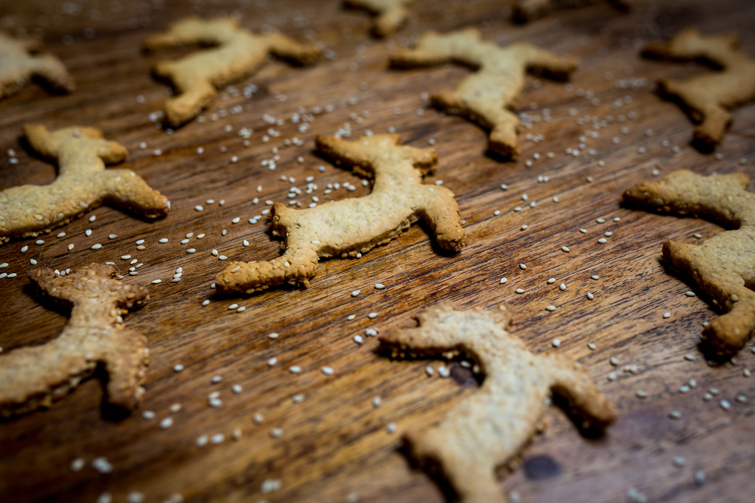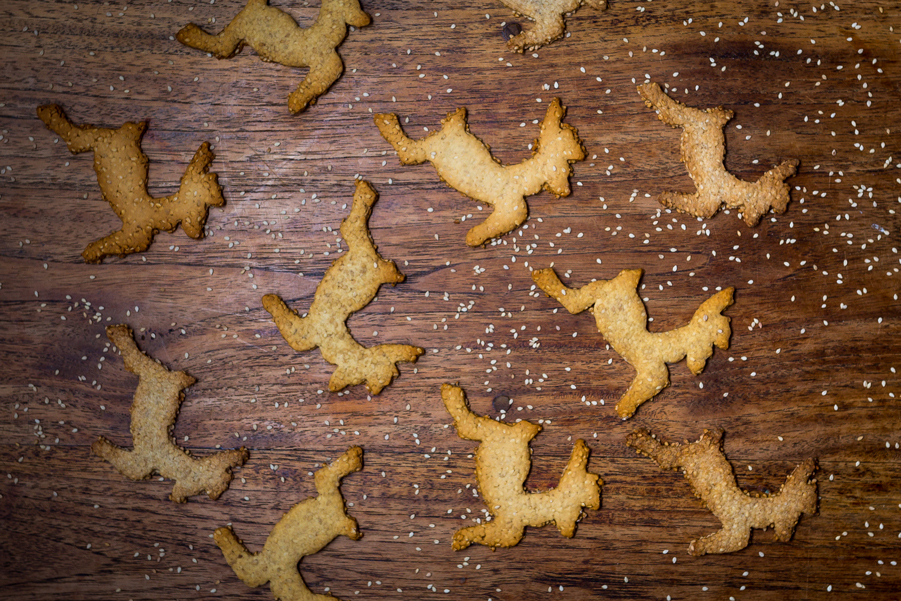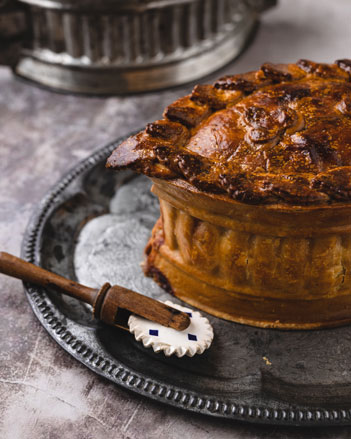I’m working on a series of recipes from the ancient world for Ancient History Magazine. For their issue on Ancient Greece & Artemis I recreated these tasty sesame biscuits.
There are a lot of ancient sources that gives us plenty and sometimes detailed information about food and dining in antiquity. Unfortunately, there are two things that have not been preserved from history: smell and taste. If we want to reconstruct ancient Greek dishes and flavours today, we have to puzzle a lot with a wide range of sources. Although it is always our interpretation of lost flavours, we can come close to enjoy ancient Greek taste again.
Ancient Greek recipes
There are hardly any recipes left to us from ancient Greece. Fortunately, Greek literature gives us lots of information about Greek food, foodproduction, meals, menus, condiments, ingredients, eating habits, banquets, food offerings and even clues about recipes. There is evidence in literature of more then twenty books about cooking and eating from ancient Greece. Only a few survived history.
One of the most important sources to extract recipes and flavours from, is the Deipnosophistae (The Learned Banqueters) from Athenaeus of Naucratis from the early third century. Athenaeus describes a series of banquets at which the diners had a lot of conversations. In these conversations the diners use quotations from works from about 700 Greek authors. Among them are authors who have wrote about food, banqueting and recipes. Most of these texts are lost to us today. Thanks to the huge task of Athenaeus we know today for example that there were cookbooks in ancient Greece, that they had lovely recipes, that they reclined horizontal and that a wide range of foodstuffs was on the menu.
Food in Ancient Greece
Don’t think that everybody in ancient Greece ate the same food or eat in the same style. There were regional differences in dishes and eating habits. But there are similarities.
Along with legumes, grains were the most important ingredients in ancient history. Barley and wheat were staple foods. They were both grown in Greece in ancient times, along with spelt. Barley was mostly used for making pancakes and cakes, because it does not rise well. Wheat was the preferred grain for raised breads. Spelt was used for both.
Another staple in ancient Greece were olives. They were eaten pickled and of course as olive oil, which was used generously in ancient cookery. It served several food purposes. It was used to marinade, to cook with, to dress vegetables and cooked food with and in conserving.
Fruit and vegetables supplemented the menu. Although they were not populair to write about, we do know that Greeks love there cabbages, beets, leeks and onions. Sometimes we come across forgotten vegetables like flower bulbs. The bulbs that are mentioned by Athenaeus are still eaten in Puglia in Italy by the name of lampascioni, a real delicacy!
In contrary to later Roman cuisine, there a quite a lot recipes with cheese. Is was wrapped in fig- or vine leaves, wrapped in dough, interlayered with sheets of dough as a sort of lasagna, used in breads, cakes and desserts. For who could afford it, meat and fish was on the menu. Dishes with fish were far more common than with meat.

Religious food
Food and religion were often interwoven. Offerings to the gods, in public and at home, are often food related. Food offerings could be parts of an animal, but mostely more modest foods like milk, herbs, pieces of bread, cakes and biscuits were offered.
There are many references to food that is eaten at religious moments, in honour of a god or for example at religious festivals. We thank Athenaeus again for his tribute to this subject. He mentions some cakes and biscuits in relation to gods and religious festivals. Like basynias, boiled wheat dough with honey, which is sacrifed to Iris by the Delians. Or amphiphon, a flat cake with little torches lit around it in a circle, as an offer to Artemis or Hecate. What about mulloi, made from sesame and honey in the shape of woman genital organs, from Syracuse for Persephone and Demeter. And he also describes elaphos, cakes or biscuits in the form of a deer for the festival of elaphebolia. A festival at Athens and Phocis dedicated to Artemis. Athenaeus is very specific about these cakes, so lets try to recreate them and enjoy ancient Greek taste again.
Athenaeus says:
A flat cake in the shape of a deer served at the festival of Elaphebolia made from spelt dough, honey and sesame seeds.

Recipe for ancient Greek biscuits
Ingredients
3 oz/85 g sesame seeds
3 oz/85 g spelt flour
1 ½ oz/40 g honey
1 fl oz/30 ml water
olive oil
Preparation
Preheat your oven on 350°F/180°C.
Put he sesame seeds, spelt flour, honey and water in a mixing bowl. Knead this together until you have a smooth dough. If it is to dry, add a little bit of water. If it is to wet, add a bit of flour.
Roll out the dough nice and thinly with a rolling pin. Use some flour to dust your rolling surface and rolling pin, because otherwise the dough will stick to it. Use a pastry cutter in the shape of a deer, or a knife and your best cutting skills, to cut out deer shaped biscuits. Brush them with a litlle bit of olive oil. Place them on baking paper on a baking tray. Bake them in the preheated oven for 15 minutes.
Let them cool on a rack and eat with pleasure.
For more inspiration and articles on the Ancient World you can read Ancient History Magazine.
Pictures in this article are by Jeroen Savelkouls.


